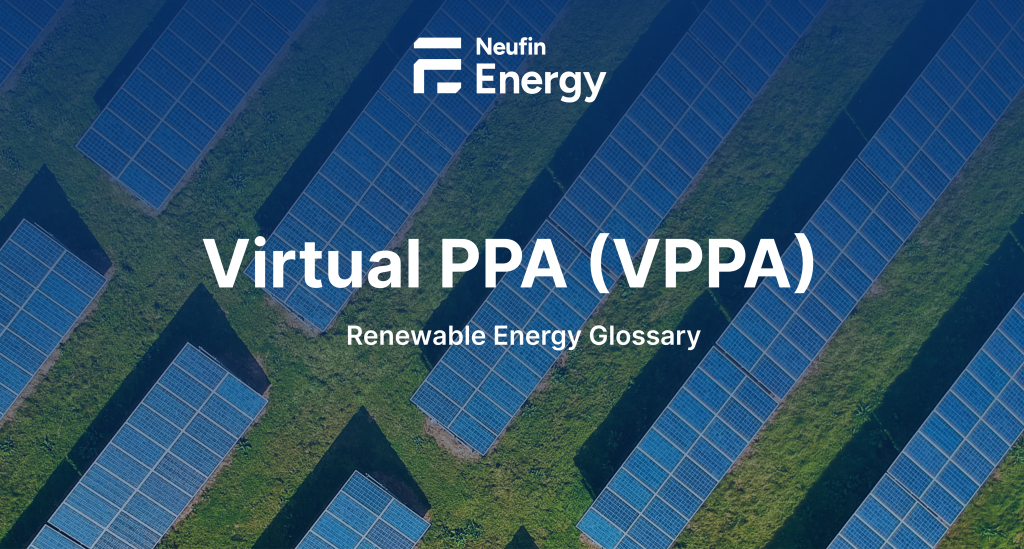With the global trend of companies shifting to environmentally friendly energy operations, Power Purchase Agreements (PPA) have increasingly remained at the center of business energy acquisition plans. Among all the other PPA models, there are the Virtual PPA and Physical PPA, which are rather different and hardly comparable; they possess different advantages, depending on the energy demands and sustainability aims of the company.
The insights of these two forms of agreements should be learned by any organization that wants to achieve a sustainable and affordable future with energy.
What is a PPA and Why Is It Important?
Power Purchase Agreement (PPA) is a long-term contract between a producer of renewable energy and a purchaser-usually a corporation, utility, or the government agency. The provision of the contract assures a steady rate of renewable power across a certain period of time which is as many as the decades. PPAs offer an opportunistic strategy to companies that want to decrease their carbon belt or obtain predictable energy costs. Such contracts are important in facilitating the creation and funding of renewal energy projects mainly in wind and solar energy projects.
Physical PPAs: Simple and Practicable Energy Provision
A Physical PPA makes use of direct delivery of renewable energy by a producer, to a buyer. In this contract renewable plant produces energy which physically transports the energy to the facilities of the buyer using the electrical grid. The cost of the energy is always set on a fixed-rate basis on per megawatt-hour (MWh) basis, which ensures stability of the producer and the buyer. This model however carries a big burden; flexibility since the seller has to be in the same grid with the buyer.
Physical PPAs in the case of companies whose locations are close to renewable energy plants will have the following advantages since energy with tangible benefits can be obtained directly. They also enable the companies to claim the environmental properties of the energy, such as Energy Attribute Certificates (EACs), which guarantee the clarity of the sustainable efforts.
Virtual PPAs: Delivery Free with Financial Flexibility
By contrast, Virtual PPA (sometimes called synthetic PPA or financial PPA) does not imply any physical delivery of electricity. Rather, the two sides come up with a fixed price on the energy, although the buyer does not get the physical electricity. Rather, the contract is a financial hedge- it settles the differences between the agreed price and prevailing market price. The buyer normally comes in to purchase Renewable Energy Certificates (RECs) or Guarantees of Origin (GOs) related to the generated renewable energy of this project, so he can take the environmental attributes whether the energy is actually reaching his facilities or not.
This model has added flexibility since it eliminates the necessity of the off-taker to be close to the energy supply. It provides the business with an opportunity to make cross-border purchases in the renewable energy sector accessing cheaper or abundant renewable resources irrespective of the geographical boundaries. Virtual PPA model enables many companies to achieve sustainability goals and control the cost of energy in a more flexible manner to reflect the developments in the market.
Main Differences: Adaptability, Risk and Economic Implication
Companies have to consider numerous criteria when deciding between a Virtual and Physical PPA. Flexibility is one of the major differences. Physical PPAs They demand that the off-taker and the producer of energy are in the same grid, which can restrict the buyer to a few choices. The cross-border agreements, however, are possible with virtual PPAs and it will be simplified to source energy in the locations where renewable energy is more likely to be found or cheaper.
The other important point is the financial structure. As much as Physical PPAs provide a direct connection between the producer of energy and the buyer, Virtual PPAs are more flexible financially. They are treated as ways of hedging as the monetary settlement of the financial contract is done on terms in the market. This flexibility has risks since the prices of energy may change causing financial imbalance of the agreement.
Accounting-wise, in many jurisdictions (such as Europe, where companies are using IFRS accounting standards) the virtual PPAs have been characterized as financial derivatives. This may cause the ups and downs of the financial accounts of a firm as per the volatility of the energy market. On the contrast, Physical PPAs are usually considered as operational agreements, and they do not have as many financial complexities.
Selecting the Proper PPA to Your Business
A choice between a Virtual or physical PPA is finally going to be determined by the specific requirements of a company and its priorities. In case a business wants to connect directly to renewable energy, and when a business can sustain the energy requirement in terms of stability and localization, a Physical PPA may work better. But to other companies interested in financial flexibility, less geographical binding, and a more convenient means of scaling the establishment of renewable energy, a Virtual PPA can be the path of choice.
These two models give companies the chance to buy long-term energy agreements, cut down carbon footprint and enlighten expansion of renewable energy. With the awareness of the distinctions and possible advantages of Virtual PPA as opposed to Physical PPA, companies will be able to face the new energy system and align their purchasing decisions with their sustainability plans.
Since the energy sector is still developing, the future in corporate energy buying is with making smart, tactical decisions on the source of renewable energy in terms of how and where to do it information may be delivered by a Virtual PPA, Physical PPA, or a combination of both.



